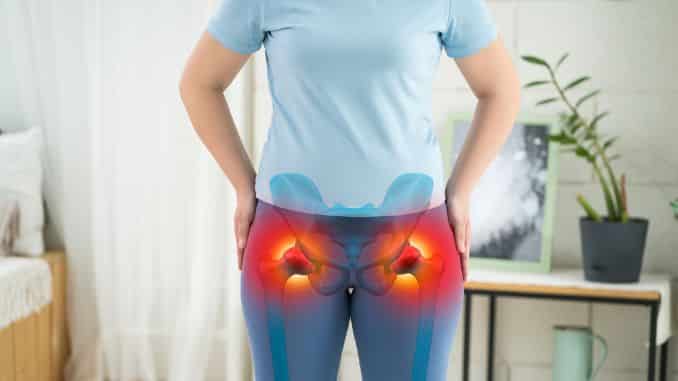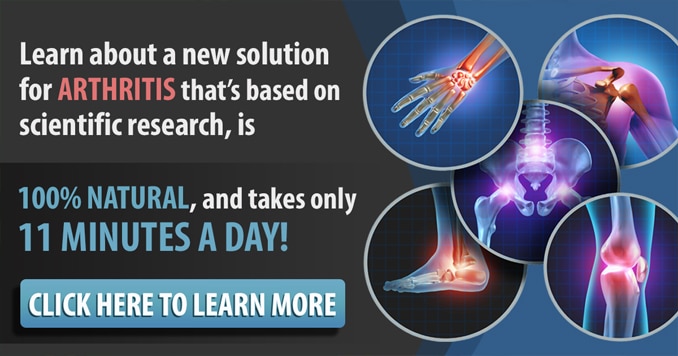Hip pain is common and can be caused by injuries, wear and tear, or overuse. Two common conditions that cause hip pain are hip bursitis [1] and hip arthritis.
Both can lead to discomfort and make it hard to move, but they are different in what causes the pain.
Why It’s Important to Tell the Difference?
It’s important to know whether you have hip bursitis or hip arthritis because the treatments are different.
Dr. Ryan Bauman explains that hip bursitis occurs when one of the fluid-filled sacs (bursae) around the hip—commonly the trochanteric bursa—becomes inflamed, causing pain, especially when lying on your side. It’s usually treated with physical therapy, anti-inflammatory meds, and injections, with surgery rarely needed.
Hip arthritis happens when the cartilage in the hip wears down, causing pain and stiffness. Treatment often includes physical therapy, anti-inflammatory drugs, and, in severe cases, surgery.
| Feature | Hip Bursitis | Hip Arthritis |
| Primary Cause | Inflammation of the bursa (often trochanteric) | Degeneration of joint cartilage (OA) |
| Pain Location | Outer hip/thigh | Deep groin, front of hip, or buttock |
| Common Triggers | Lying on the affected side, climbing stairs | Prolonged activity, morning stiffness |
| Symptoms | Sharp, localized pain | Dull ache, stiffness, reduced mobility |
| Treatment | NSAIDs, physical therapy, corticosteroid injection | NSAIDs, strengthening, joint replacement in advanced cases |
| Onset | Sudden or gradual, often activity-related | Gradual, age-related |
| Similar symptoms | Pain in the hip [2] area, especially when moving or lying downPain may radiate to the outer thighLimited range of motion | |
Risk Factors
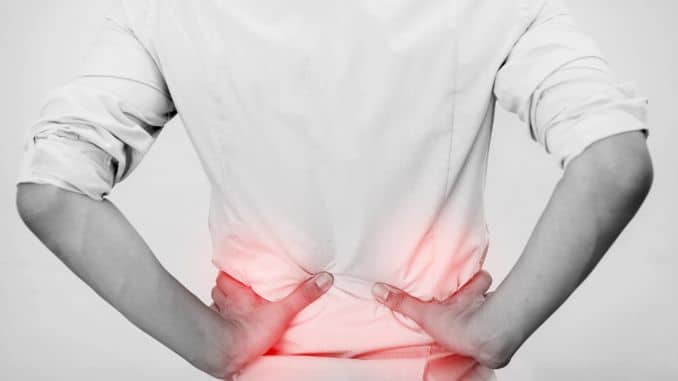
- Age – Both conditions are more common in older adults.
- Gender – Women are at higher risk for both hip arthritis and hip bursitis, especially after menopause.
- Obesity – Extra weight puts more pressure on the hips, increasing the risk for both conditions.
- Joint Injuries – Previous hip injuries or surgeries can lead to arthritis or bursitis.
- Repetitive Activities – Repetitive movements like running, cycling, or high-impact sports can trigger bursitis and wear down the hip joint [3], leading to arthritis.
- Posture Issues – Poor posture or incorrect movements can strain the hip and contribute to bursitis and arthritis.
- Inactive Lifestyle – Lack of physical activity can lead to joint stiffness and increase the risk of arthritis and bursitis.
- Spinal Problems – Issues like lumbar spinal stenosis can increase the risk of bursitis.
- Smoking [4] – Linked to impaired tissue healing and may increase risk for tendon and bursal irritation. (4)
Effective Exercises for Managing Hip Bursitis and Hip Arthritis
1. Forward Fold with Twist
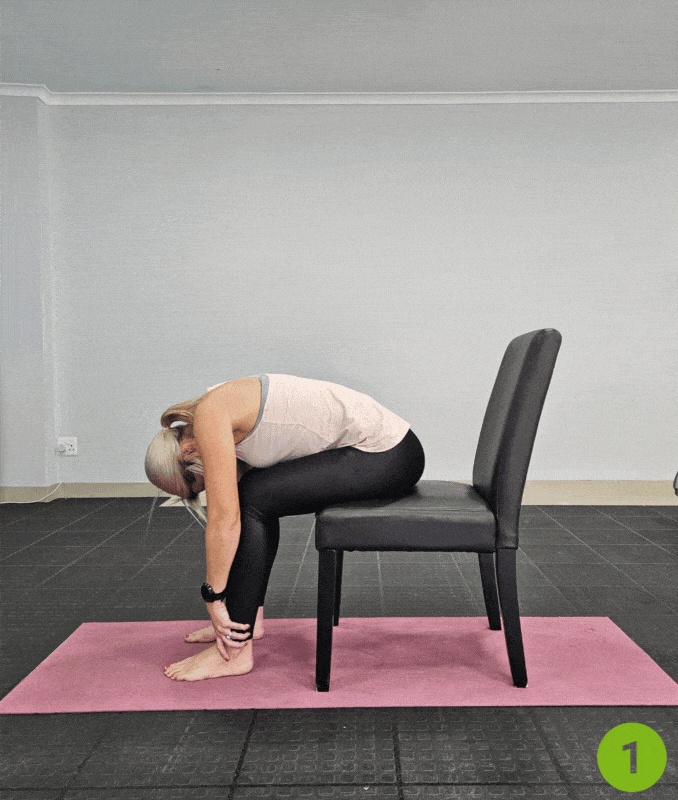
- Begin in an upright sitting position with your knees bent and feet flat on the floor, maintaining good alignment with your head, shoulders, and hips.
- Then, engage your core muscles. Hinge through your hips to bend your upper body forward.
- Place your right hand on your left ankle and twist your upper body to the left side as you extend your left arm overhead.
- Hold the position for a few seconds.
- Moreover, lower your arm to return to the starting position and repeat the movement on the opposite side.
2. Standing Hip Flexor Stretch
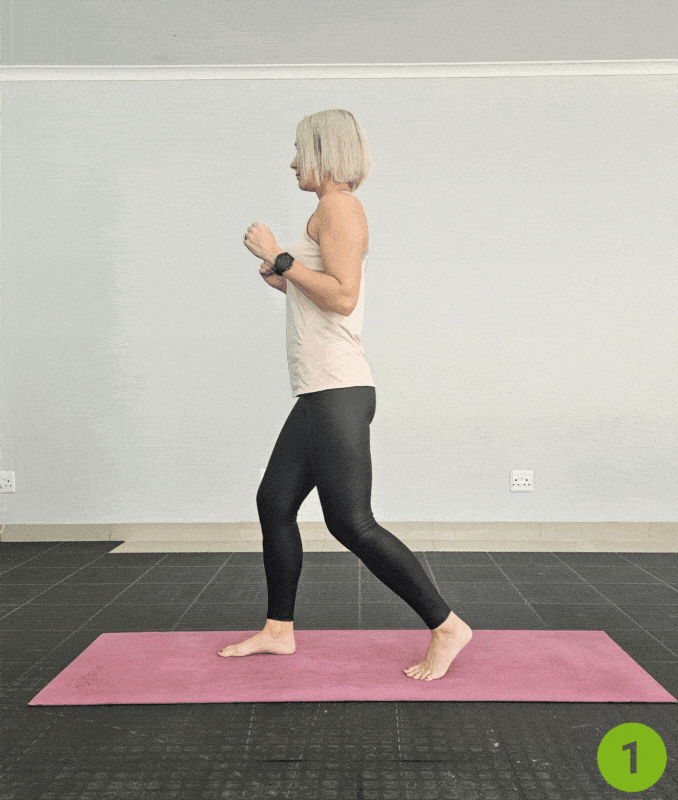
- Begin in an upright standing position with your feet hip-width apart.
- Maintain good alignment with your head, shoulders, hips, and legs.
- Place your hands at your side.
- Take a step back with your left leg, slightly bend your knees to move your hips forward as you lift your left heel off the floor.
- Engage your core muscles. Gently straighten your left leg by pressing your left foot on the floor while keeping your front knee bent.
- You will feel a stretch in the hip flexor of the back leg.
- Hold the position for a couple of seconds.
- Relax and repeat the movement on the opposite side.
3. Butterfly Stretch
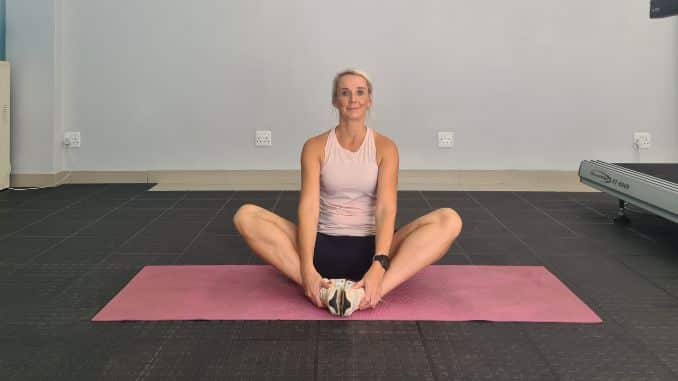
- Begin in an upright sitting position on the floor, maintaining good alignment with your head, shoulders, and hips.
- Engage your core and bring the soles of your feet together, spreading your knees out to the sides while keeping your spine straight.
- Hold the position for several deep belly breaths, in through your nose and out through your mouth.
4. Side-Lying Clam
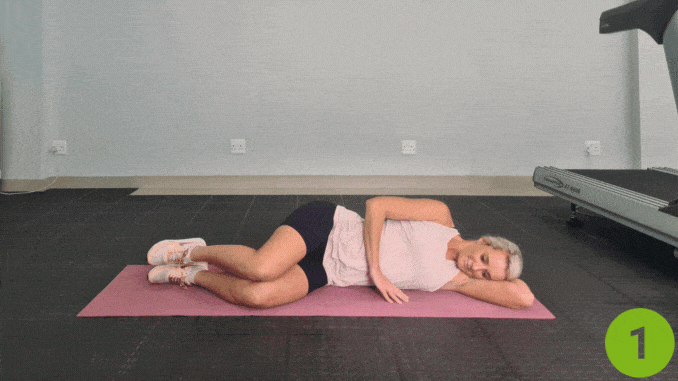
- Lie on your side on the floor with your knees bent and stacked together.
- Maintain good alignment with your head, shoulders, and hips. Bend your bottom arm and place it on the side of your neck to prop up and support your head.
- Place your top arm in front of your chest with your hand resting on the floor to stabilize your torso without pushing excessively.
- Tighten your abdominal muscles.
- Lift your top knee to open your legs while keeping your feet together.
- Lower it down to return to the starting position and repeat the movement 10 repetitions.
- Relax and repeat the movement on the opposite side.
5. Hip Hinge
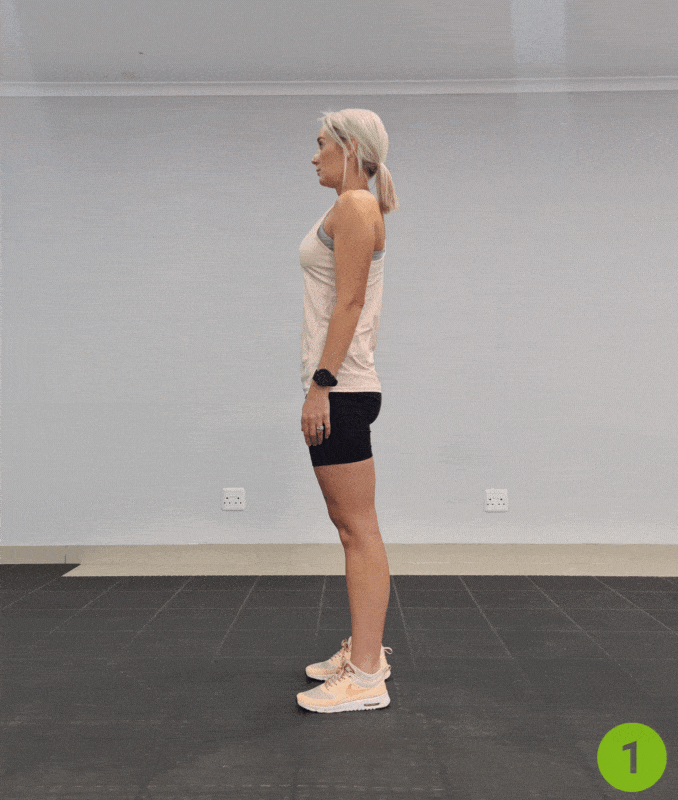
- Begin in an upright standing position with your feet hip-width apart, and maintain good alignment with your head, shoulders, hips, and legs. Place your hands on your hips or extend them forward for balance.
- Engage your core. Hinge through your hips to bend your upper body forward as you reach your hands toward the floor while keeping your spine neutral.
- Hold the position for several deep belly breaths, in through your nose and out through your mouth.
- Return to the starting position and repeat the movement for 5 repetitions.
Final Thoughts
Understanding the difference between hip bursitis and hip arthritis is essential for proper treatment and managing hip joint pain effectively. While both conditions cause discomfort and mobility issues, recognizing the unique causes and symptoms of each can lead to better care.
For example, rheumatoid arthritis often leads to persistent joint pain and swelling, while bursitis typically results from repetitive pressure or movement. Whether your hip pain stems from bone spurs, a labral tear, bursitis, or arthritis, seeking professional guidance ensures you get the right treatment tailored to your specific needs and improves your quality of life.
There is a new, safe, natural way to decrease your arthritis pain and suffering. Click here to learn more.
Frequently Asked Questions
How do I know if I have bursitis or arthritis?
To distinguish between bursitis and arthritis, think about what makes the pain worse. If it’s related to repetitive movement or pressure, it might be bursitis. If it involves persistent joint pain, stiffness, and swelling, especially when you move, it could be arthritis, such as rheumatoid arthritis. A doctor can help determine which condition you have.
How do I know if my hip pain is arthritis?
Hip arthritis often causes pain that worsens when you’re moving or after activity. You may also feel stiffness, especially after resting or in the morning. The pain might also spread to your groin or thigh. Bone spurs or changes in the hip bone structure can also be involved in arthritis and contribute to discomfort.
How do I know if my hip pain is bursitis?
Pain from hip bursitis is usually more focused on the outer part of the affected hip. It can be sharp and worsen with activities like walking, climbing stairs, or lying on the affected side. You might also feel pain when you press on the area. If you’ve had a hip labrum tear, that might cause pain similar to bursitis.
What can be mistaken for hip bursitis?
Conditions like hip flexor strain or tendinitis can feel similar to bursitis because they also cause pain around the hip joint. Sometimes, hip arthritis, bone spurs, or even a hip labrum tear can cause symptoms that are mistaken for bursitis. A healthcare pr

